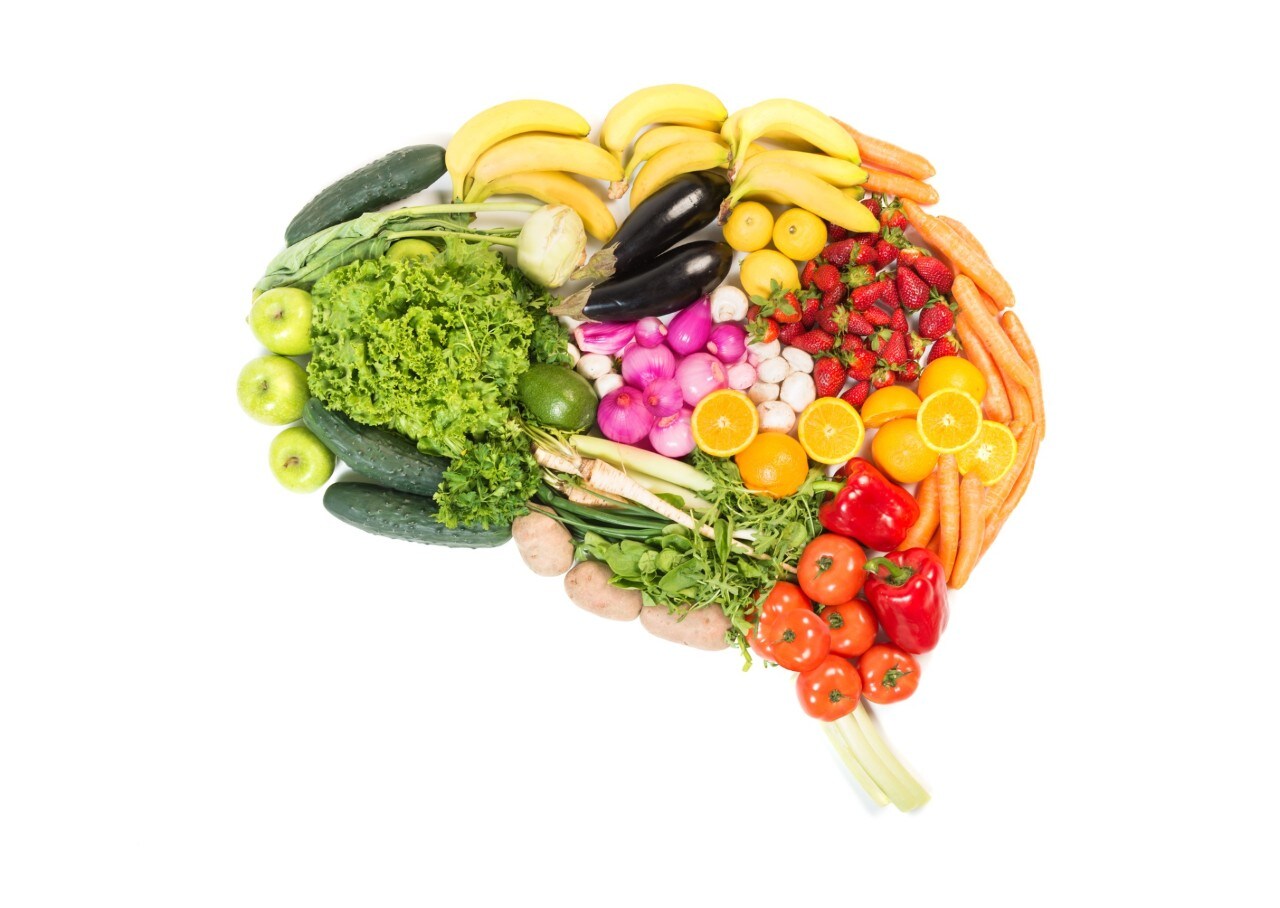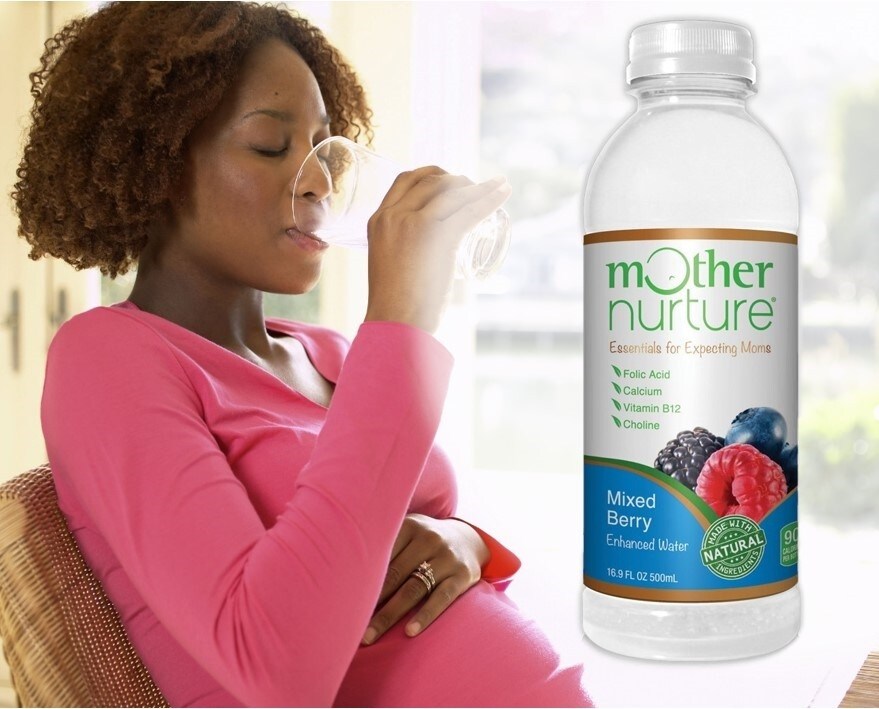
지속가능성 보고 카드 – 더블 A 등급 달성
DSM은 2017년에 기후 변화와 물 부문에서 A 등급을 받았습니다. 전 세계에서 더블 A 등급을 받은 기업은 단 25개뿐입니다. DSM의 지속가능성 노력에 대해 보다 자세히 알아보세요.
노후를 활기차게 보내고 싶으십니까? 평생 더 젊게, 즐겁게, 올바른 정신으로 살고 싶습니까? 그럴 수 있습니다. 노화 진행을 수십 년 늦추고 멋지게 보이고, 생각하며, 느끼면서 늙어가는 방법이 충분히 있습니다.
최근 발생하는 노화와 관련된 대부분의 질병과 기능 장애는 생활 방식에서 비롯된 것입니다. (40,44) 단순히 시간이 지나서 기능이 저하되는 것이 아니라 우리가 선택한 생활 방식이 노화에 영향을 미친다는 것입니다. 먹는 음식과 힘을 보충하고 생활 방식을 바꾼다면 중년을 최대한 건강하게 오래 즐기고 허약한 노년기를 늦추거나 피할 수도 있습니다. (1,11,14,15,24)
노화는 갑작스럽게 일어나는 현상이 아니라 연속된 과정입니다. 어느 날 아침 일어나 보니 늙어있는 것이 아니라는 말입니다. 심장 질환부터 피부 노화까지 고령층의 영양 문제도 중년부터 시작됩니다. 식습관과 관련된 건강 문제는 시간이 지날수록 커집니다. 피부가 햇빛에 노출되면 체내에서 비타민 D와 B12가 생성되지만 나이가 들면서 이러한 기능은 서서히 약화됩니다. 피부가 햇빛에 노출되면 체내에서 비타민 D가 생성되지만 나이가 들면 서서히 이 기능을 잃어버립니다. (51,52) 시간이 지날수록 비타민 D를 음식과 보조제로 섭취하는 것이 더욱 중요해집니다. (2) 나이가 들수록 비타민 B12의 필요성은 더욱 중요한 반면 비타민 B12의 섭취가 부족한 노인들은 많습니다. (23,33). 노년기 건강을 위해 많은 양을 섭취해야 하는 또 다른 영양소는 칼슘과 비타민 B6입니다. (50,53)
노화를 늦추는 식사는 빨리 시작할수록 좋습니다. 단, 언제라도 늦지 않습니다. 간단한 요령만 지킨다면 실천하기 어렵지 않습니다.
노화 과정을 늦추고, 멈추고, 심지어 되돌리기 위해 실천할 수 있는 가장 중요한 식습관은 항산화제와 섬유질이 풍부한 음식의 섭취를 늘리는 것입니다. 특히 다양한 색깔의 과일과 채소를 먹어야 합니다. (5,6,10,34,37) 심장 질환부터 백내장, 주름까지 노화와 관련된 모든 질병의 근본 원인은 산화 물질 또는 활성산소라 불리는 산소 조각입니다. 그대로 내버려 둔다면 이런 산화 물질이 세포와 조직을 손상시키게 되며 나이가 들수록 손상 범위는 커집니다. (49) 다행히 인체에는 항산화물질이라 불리는 활성산소 방지 체계가 있어서 산화 물질로 인한 인체 손상을 억제하고 활성산소를 제거합니다. (45,46)
대부분의 경우 항산화물질은 음식을 통해 섭취합니다. 예를 들어, 비타민 C는 피부의 기저 지지 구조인 정상 콜라겐을 생성하는데 기여합니다. 피부가 햇빛에 노출되면 피부에서 비타민 E가 대폭 감소하는데 항산화물질을 섭취하면 산화 스트레스로부터 세포를 보호하는 데 도움이 됩니다. (38) 과학 연구에 따르면 비타민 E가 콜라겐을 분해하여 피부 처짐과 주름을 유발하는 콜라게나아제라는 효소의 생성을 줄여 피부 세포의 노화를 늦춘다고 밝혀졌습니다. (47)
색이 진한 농산물을 먹으면 항산화물질이 증가합니다. 특히 진녹색 잎채소에는 항산화 성분이 많고 뇌 건강에 도움이 되는 엽산과 비타민 K가 풍부합니다. (30) 농산물을 많이 먹으면 젊어 보이고 젊어진 느낌이 드는 것은 물론 허리둘레를 관리하기도 수월합니다! (48,54)
포화지방과 트랜스 지방 같은 일부 지방은 노화 과정을 가속화할 수 있습니다. 붉은 고기, 지방으로 된 유제품, 경화 식물성 기름으로 만든 식품의 섭취는 줄여야 합니다. (3,13,22,35) 대신에 엑스트라 버진 올리브 오일 같은 단순 불포화 지방과 생선에 든 오메가 3와 같은 건강한 지방으로 바꿔야 합니다. 오메가 3 지방 DHA는 심장 건강과 정상 시력을 유지하는 데 특히 중요합니다. (12,16) 맑은 정신을 유지하는 데에도 도움이 됩니다. (27,28,29,32,33) 연어처럼 지방이 풍부한 생선을 매주 두 번 이상 식탁에 올리거나 DHA 보조제를 섭취하세요.
허리의 군살을 없애고 금연하는 것이 건강한 중년을 70세 넘어서까지 연장하는 최고의 방법입니다. 가공식품과 패스트푸드를 줄이고 제대로 된 음식에 집중한다는 한 가지 간단한 규칙만 지킨다면 체중 감량은 가능합니다. 가공식품은 체중을 늘릴 뿐만 아니라 노화 과정도 촉진합니다. 그래놀라 바 대신 오트밀, 프렌치프라이 대신 감자, 흰 빵 대신 100% 통밀빵, 콘칩 대신 옥수수를 먹는 등 원래 형태로 식품을 섭취하면 칼로리를 줄일 수 있습니다. (7,8,36,39,42,43)
필요한 영양소는 항상 식품으로 섭취하는 것이 우선입니다. 하지만 충분히 먹지 못하는 날에는 보조제 한 두 개로 영양 부족분을 메우는 것도 괜찮습니다. (21,41) 제대로 고르는 것이 중요합니다. 보조제 품질과 관련하여 다음 사항을 확인해보세요.
1단계: 종합 비타민과 미네랄 보조제를 선택하세요. 비타민 A, D, E, K, 모든 B 비타민(B1, B2, B6, B12, 나이아신, 엽산), 미량의 무기물(크롬, 구리, 철, 망간, 셀레늄, 아연)이 함유된 제품을 찾으세요.
2단계: 라벨에 "하루 섭취량"이라고 써진 곳을 보세요. 모든 영양소의 하루 섭취량이 약 100%이되 300%는 넘지 않는 종합 비타민을 찾으세요. 한 가지 영양소는 2%, 다른 것은 50%, 또 다른 것은 600% 보충하는 비타민제가 아니라 "균형 잡힌" 보조제를 먹어야 하니까요. 비타민 D는 예외입니다. 하루 섭취량보다 많이 먹어도 괜찮습니다.
3단계: 미국이라면 USP 인장 표시를 확인하세요. 미국 약전(United States Pharmacopeia)은 표준을 수립하는 비정부 기관입니다. USP 품질 인장을 받았다는 것은 순수 원료를 재료로 라벨에 적힌 양대로 영양소가 함유된, 소화관 내에서 용해되는 보조제라는 뜻입니다.
4단계: 보조제를 보충하세요. 칼슘과 마그네슘의 경우 하루에 종합 비타민 한 알만을 섭취해서는 채워지지 않습니다. 눈 건강을 위해서는 루테인과 제아잔틴을, 심장과 시력, 뇌를 위해서는 오메가 3 DHA 보조제를 섭취하세요. (17,18,19,20)
다른 방법이 없습니다. 운동은 반드시 해야 합니다. 지방을 태우고 심장과 뇌를 건강한 상태로 유지하려면 매일 유산소 운동(빨리 걷기, 조깅, 수영, 자전거 타기 등)을 해야 하고, 근육을 유지하려면 부엌에서 큰 우유통을 들어 올리든 뭐든 근력 운동(역도)을 일주일에 두 번 이상 해야 합니다. (4,9,25,26,31)
다행인 것은 인체가 하나의 큰 패키지라는 사실입니다. 심장에 도움이 되는 식품은 뇌 건강에도 도움이 되고 환한 안색을 위해서도 도움이 됩니다. 그러니 잘 드세요!
참고 문헌
1. Jacob M, Yee L, Diehr P, et al: Can a healthy lifestyle compress the disabled period in older adults? Journal of the American Geriatric Society 2016;64:1952-1961.
2. Schleicher R, Sternberg M, Lacher D, et al: The vitamin D status of the US population from 1988-2010 using standardized serum concentrations of 25-hydroxyvitamin D shows recent modest increases. American Journal of Clinical Nutrition 2016;July 6th.
3. Song M, Fung T, Hu F, et al: Association of animal and plant protein intake with all-cause and cause-specific mortality. JAMA Internal Medicine 2016; August 1st.
4. Merril D, Siddarth P, Raji C, et al: Modifiable risk factors and brain positron emission tomography measures of amyloid and tau in nondemented adults with memory complaints. American Journal of Geriatric Psychiatry 2016; August 17th.
5. Du H, Li L, Bennett D, et al: Fresh fruit consumption and major cardiovascular disease in China. New England Journal of Medicine 2016;374:1332-1343.
6. Buil-Cosiales P, Toledo E, Salas-Salvado J, et al: Association between dietary fibre intake and fruit, vegetable, or whole grain consumption and the risk of CVD. British Journal of Nutrition 2016; June 6:1-13.
7. Song M, Hu F, Wu K, et al: Trajectory of body shape in early and middle life and all cause and cause specific mortality. British Medical Journal 2016; May 4th.
8. Aune D, Sen A, Prasad M, et al: BMI and all cause mortality. British Medical Journal 2016; May 4th.
9. Kraschnewski J, Sciamanna C, Poger J, et al: Is strength training associated with mortality benefits? Preventive Medicine 2016; 87:121-127.
10. Gopinath B, Flood V, Kifley A, et al: Association between carbohydrate nutrition and successful aging over 10 years. Journal of Gerontology 2016;June 1st.
11. Hagan K, Chiuve S, Stampfer M, et al: Greater adherence to the Alternative Healthy Eating Index is associated with lower incidence of physical function impairment in the Nurses Health Study. Journal of Nutrition 2016;146:1341-1347.
12. DelGobbo L, Imamura F, Aslibekyan S, et al: Omega-3 polyunsaturated fatty acid biomarkers and coronary heart disease. JAMA Internal Medicine 2016;June 27th.
13. Wang D, Li Y, Chiuve S, et al: Association of specific dietary fats with total and cause-specific mortality. JAMA Internal Medicine 2016;July 5th.
14. Feigin V, Roth G, Naghavi M, et al: Global burden of stroke and risk factors in 188 countries, during 1990-2013. Lancet Neurology 2016;June 9th.
15. Loprinzi P, Branscum A, Hanks J, et al: Healthy lifestyle characteristics and their joint association with cardiovascular disease biomarkers in US adults. Mayo Clinic Proceedings 2016;91:432-442.
16. Marklund M, Leander K, Vikstrom M, et al: Polyunsaturated fat intake estimated by circulating biomarkers and risk of cardiovascular disease and all-cause mortality in a population-based cohort of 60-year-old men and women. Circulation 2016;132:586-594.
17. Silvan J, Requero M, de Pascual-Teresa S: A protective effect of anthocyanins and xanthophylls on UVB-induced damage in retinal pigment epithelial cells. Food & Function 2016; 7:1067-1076.
18. Alassane S, Binquet C, Cottet V, et al: Relationships of macular pigment optical density with plasma lutein, zeaxanthin, and diet in an elderly population. Investigative Ophthalmology and Vision Science 2016;57:1160-1167.
19. McCusker M, Durrani K, Payette M, et al: The role of vitamins, essential fatty acids, and antioxidants in age-related macular degeneration, dry eye syndrome, and cataracts. Clinical Dermatology 2016; 34:276-285.
20. Gatell-Tortajada J: Oral supplementation with a nutraceutical formulation containing omega-3 fatty acids, vitamins, minerals, and antioxidants in a large series of patients with dry eye symptoms. Clinical Intervention in Aging 2016;11:571-578.
21. Rautiainen S, Rist P, Glynn R, et al: Multivitamin use ant the risk of cardiovascular disease in men. The Journal of Nutrition 2016; 146:1235-1240.
22. Stefani E, Boffetta P, Ronco A, et al: Meat consumption, related nutrients, obesity and risk of prostate cancer. Asian Pacific Journal of Cancer Prevention 2016;17:1937-1945.
23. Pfisterer K, Sharratt M, Heckman G, et al: Vitamin B12 status in older adults living in Ontario long-term care homes. Applied Physiology, Nutrition, and Metabolism 2016; January 19th.
24. Gardener H, Wright C, Dong C, et al: Ideal cardiovascular health and cognitive aging in Northern Manhattan Study. Journal of the American Heart Association 2016; March 16th.
25. Steffener J, Habeck C, O Shea D, et al: Differences between chronological and brain age are related to education and self-reported physical activity. Neurobiology and Aging 2016; 40:138-144.
26. Raji C, Merrill D, Eyre H, et al: Longitudinal relationships between caloric expenditure and gray matter in the Cardiovascular Health Study. Journal of Alzheimer s Disease 2016: March 11th.
27. Morris M, Brockman J, Schneider J, et al: Association of seafood consumption, brain mercury level, and APOE e4 status with brain neuropathology in older adults. Journal of the American Medical Association 2016; 315:489-497.
28. Heras-Sandoval D, Pedrraza-Chaverri J, Perez-Rojas J: Role of docosahexaenoic acid in the modulation of glial cells in Alzheimer s disease. Journal of Neuroinflammation 2016; March 10th.
29. Nishihira J, Tokashiki T, Higashiuesato Y, et al: Associations between serum omega-3 fatty acid levels and cognitive functions among community-dwelling octogenarians in Okinawa, Japan. Journal of Alzheimers Disease 2016; February 16th.
30. Soutif-Veillon A, Ferland G, Rolland Y, et al: Increased dietary vitamin K intake is associated with less severe subjective memory complaint among older adults. Maturitas 2016; February 11th.
31. Schafer M, White T, Evans G, et al: Exercise prevents diet-induced cellular senescence in adipose tissue. Diabetes 2016; March 16th
32. Zhang Y, Chen J, Qiu J, et al: Intakes of fish and PUFAs and mild-to-severe cognitive impairment risks. American Journal of Clinical Nutrition 2015; December 30th.
33. Oulhaj A, Herneren F, Refsum H, et al: Omega-3 fatty acid status enhances the prevention of cognitive decline by B vitamins in mild cognitive impairment. Journal of Alzheimer s Disease 2016; January 6th.
34. Wu J, Cho E, Willett W, et al: Intakes of lutein, zeaxanthin, and other carotenoids and age-related macular degeneration during 2 decades of prospective follow-up. JAMA Ophthalmology 2015; October 8th.
35. Gu Y, Brickman A, Stern Y, et al: Mediterranean diet and brain structure in a multiethnic elderly cohort. Neurology 2015; October 21st.
36. Sahakyan k, Somers V, Rodriquez-Escudero J, et al: Normal-weight central obesity. Annals of Internal Medicine 2015; November 10th.
37. Bernstein P, Li B, Vachali P, et al: Lutein, zeaxanthin, and meso-zeaxanthin: The basic and clinical science underlying carotenoid-based nutritional interventions against ocular disease. Progress in Retinal and Eye Research 2015; November 2nd.
38. Montagnani M, Marzagalli M, Moretti R, et al: Vitamin E alpha tocotriene triggers endoplasmic reticulum stress-mediated apoptosis in human melanoma cells. Science Report 2016;July 27th.
39. Chuang Y, An Y, Bilget M, et al: Midlife adiposity predicts earlier onset of Alzheimer s dementia, neuropathology and presymptomatic cerebral amyloid accumulation. Molecular Psychiatry 2015; September 1st.
40. Xu W, Tan L, Wang H, et al: Meta-analysis of modifiable risk factors for Alzheimer s disease. Journal of Neurology, Neurosurgery & Psychiatry 2015;August 21, 2015.
41. Mohajeri M, Troesch B, Weber P: Inadequate supply of vitamins and DHA in elderly: Implications for brain aging and Alzheimer-type dementia. Nutrition 2015;31:261-275.
42. Huang T, Xu M, Lee A, et al: Consumption of whole grains and cereal fiber and total and cause-specific mortality. BMC Medicine 2015;13:59.
43. Berti V, Murray J, Davies M, et al: Nutrient patterns and brain biomarkers of Alzheimer s disease in cognitively normal individuals. Journal of Nutrition, Health & Aging 2015;19;:413-423.
44. Crous-Bou M, Fung T, Prescott J, et al: Mediterranean diet and telomere length in Nurses Health Study. British Medical Journal 2014;December 2nd.
45. Freitas-Simoes T, Ros E, Sala-Vila A: Nutrients, foods, dietary patterns and telomere length. Metabolism 2016; 65:406-415.
46. Kandola K, Bowman A, Birch-Machin M: Oxidative stress: A key emerging impact factor in health, ageing, lifestyle and aesthetics. International Journal of Cosmetic Science 2016;37:1-8.
47. Rimbach G, Minihane A, Majewicz J, et al: Regulation of cell signaling by vitamin E. Proceedings of the Nutrition Society 2002;61:415-425.
48. Schagen S, Zampeli V, Makrantonaki E, et al: Discovering the link between nutrition and skin aging. Dermatoendocrinology 2012;4:298-307.
49. Nomellini V, Gomez C, Kovacs E: Aging and impairment of innate immunity. Contributions to Microbiology 2008 15:188-205.
50. Gallagher J: Vitamin D and aging. Endocrinology and Metabolism Clinics in North America 2013;42:319-332.
51. Veldurthy V, Wei R, Oz, et al: Vitamin D, calcium homeostasis and aging. Bone Research 2016;October 18th.
52. Wacker M, Holick M: Sunlight and vitamin D. Dermatoendocrinology 2013;5:51-108.
53. Allen L: How common is vitamin B12 deficiency? American Journal of Clinical Nutrition 2009;89:693S-696S.
54. Astrup A: How to maintain a healthy body weight. International Journal of Vitamin and Nutrition Research 2006;76:208-215.

DSM은 2017년에 기후 변화와 물 부문에서 A 등급을 받았습니다. 전 세계에서 더블 A 등급을 받은 기업은 단 25개뿐입니다. DSM의 지속가능성 노력에 대해 보다 자세히 알아보세요.

이제 식품 제조업체에서 상품 라벨에 비타민 D 함량을 표기하는 것이 의무화되었습니다. 따라서 식품에서 비타민을 얼마나 섭취하고 있는지 확인할 수 있습니다. 하지만 이것만으로는 충분하지 않습니다. 그 이유에 대해 클리브랜드 클리닉의 미셀 로이젠 의사로부터 들어보세요.

장내 미생물이 소화기능, 면역 기능, 그리고 심지어 기분에까지 영향을 미칠 수 있다는 연구가 계속 입증되고 있습니다. 소화관을 최고의 상태로 만들 수 있는 자세한 방법에 대해 알아보세요.

미국에서 비타민 결핍증은 점점 더 생각보다 더욱 흔한 문제가 되어 가고 있습니다. 새로운 연구에 따르면 미국 성인 중에서 거의 1/3이 최소 1가지 이상의 비타민 결핍증에 걸릴 위험이 있습니다.



임신 중이거나 임신을 계획하고 있는 사람이라면 아마도 엽산을 섭취하라는 소리를 들어봤을 것입니다.


임신했다면 단 것, 짠 것, 신 것, 튀김 등 식욕이 증가할 수 있습니다. “YOU: Having a Baby(아이를 가진 당신)”라는 책에 따르면 임신한 여성의 75%가 식욕이 증가했다고 합니다.

기분이 언짢을 때 풀어 주는 해피 알약이 있다면 좋지 않겠습니까? 남편, 혹은 아내에게 마구 화를 내고 싶을 때 마음을 진정시켜 주는 알약은 어떤가요? 알약은 아니지만 간편하게 만들 수 있는 방법이 있습니다. 우리가 먹는 (혹은 먹지 않는) 음식이 기분을 크게 좌우합니다.
22 November 2016

DSM은 2017년에 기후 변화와 물 부문에서 A 등급을 받았습니다. 전 세계에서 더블 A 등급을 받은 기업은 단 25개뿐입니다. DSM의 지속가능성 노력에 대해 보다 자세히 알아보세요. 자세히보기.

이제 식품 제조업체에서 상품 라벨에 비타민 D 함량을 표기하는 것이 의무화되었습니다. 따라서 식품에서 비타민을 얼마나 섭취하고 있는지 확인할 수 있습니다. 하지만 이것만으로는 충분하지 않습니다. 그 이유에 대해 클리브랜드 클리닉의 미셀 로이젠 의사로부터 들어보세요. 자세히보기.

장내 미생물이 소화기능, 면역 기능, 그리고 심지어 기분에까지 영향을 미칠 수 있다는 연구가 계속 입증되고 있습니다. 소화관을 최고의 상태로 만들 수 있는 자세한 방법에 대해 알아보세요. 자세히보기.

미국에서 비타민 결핍증은 점점 더 생각보다 더욱 흔한 문제가 되어 가고 있습니다. 새로운 연구에 따르면 미국 성인 중에서 거의 1/3이 최소 1가지 이상의 비타민 결핍증에 걸릴 위험이 있습니다. 자세히보기.

영양사 겸 유명 저술가인 엘리자베스 소머가 태양 빛 아래서 그리고 전자기기 시청 시 눈을 보호하는 방법을 설명합니다. 자세히보기.
